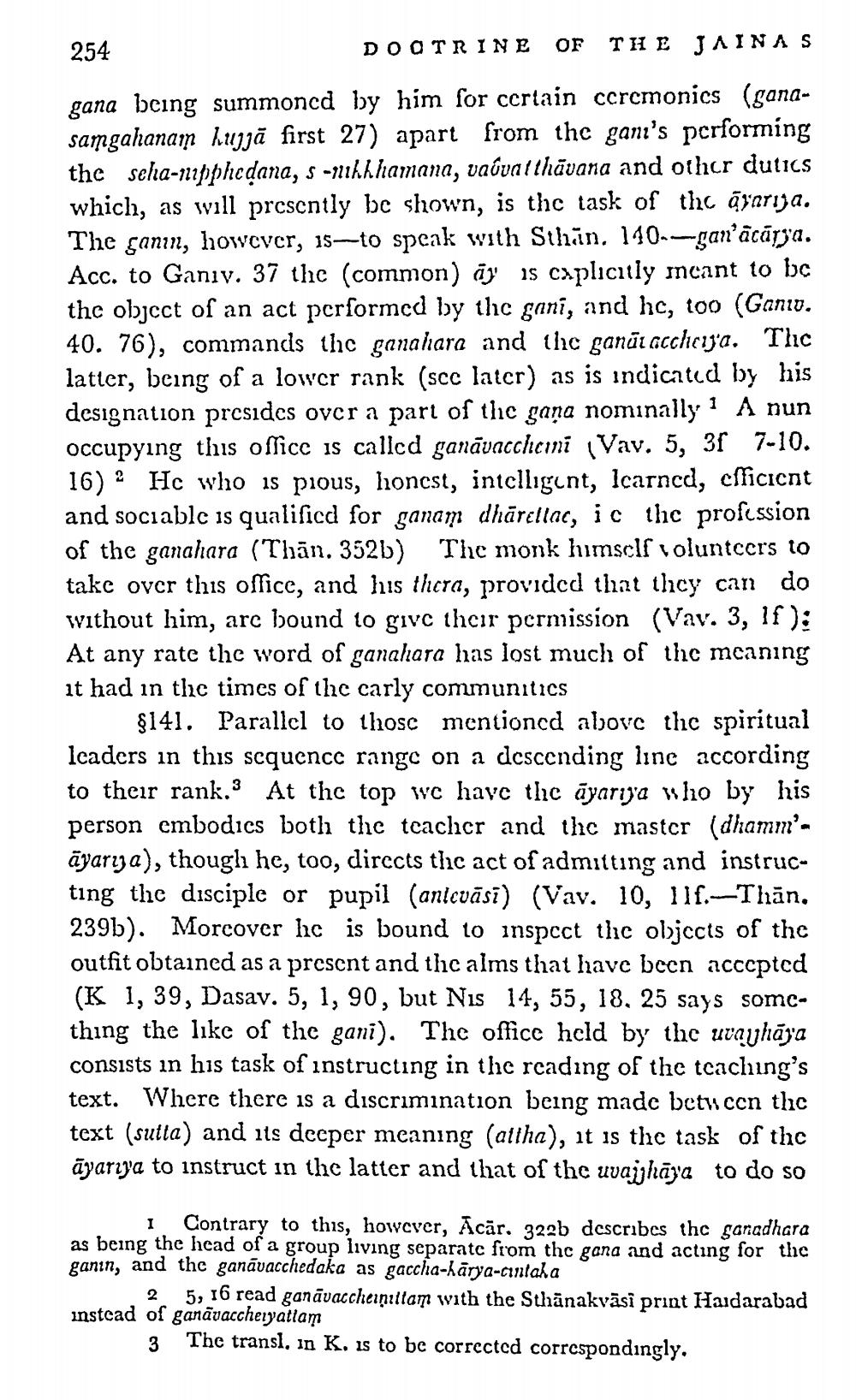________________
254
DOCTRINE OF THE JAINAS gana being summoned by him for certain ceremonics (ganasamgahanam kuijā first 27) apart from the gani's performing the scha-upphcdana, s -ahhhamana, vaóval thāvana and other duties which, as will presently be shown, is the task of the āyarija. The çanın, however, is—to speak with Sthan. 140.---gan'ācāra. Acc. to Ganiv. 37 the (common) ay is cxplicitly incant to be the object of an act performed by the gani, and hc, 100 (Gani. 40. 76), commands thc ganahara and the ganālacchcia. Tlic latter, being of a lower rank (scc later) as is indicated by his designation presides over a part of the gaña nominally ? A nun occupying this office is called ganrāvaccheri Vav. 5, 3r 7-10. 16) ? Hc who is pious, honcst, intclligent, Icarncd, cfficient and sociablc is qualificd for ganam dhārellac, ic the profession of the ganahara (Thān. 3526) The monk himscls voluntccrs to take over this office, and his thora, provided that thcy can do without him, arc bound to give their permission (Vav. 3, 1f): At any rate the word of ganahara has lost much of the meaning it had in the times of the carly communitics
$141. Parallel to those mentioned above the spiritual leaders in this scqucncc range on a descending linc according to their rank. At the top we have the dyariya who by his person embodies both the teacher and the master (dhamm'āyarıya), though he, too, directs the act of admitting and instructing the disciple or pupil (anlcvāsi) (Vav. 10, 11f.-Thān. 239b). Morcover hc is bound to inspect the objects of the outfit obtained as a present and the alms that have been accepted (K 1, 39, Dasav. 5, 1, 90, but Nis 14, 55, 18, 25 says somcthing the like of the gani). The office held by the uvayhāya consists in his task of instructing in the rcading of the teaching's text. Where there is a discrimination being made betwccn thc text (sutta) and its deeper meaning (attha), it is the task of the āyarıya to instruct in the latter and that of the uvajjhāya to do so
1 Contrary to this, however, Acār. 322b describes the ganadhara as being the head of a group living separate from the gana and acting for the ganin, and the ganāvacchedaka as gaccha-hārya-cintala
2 5, 16 read ganāvaccheiņıttam with the Sthānakvāsi print Haidarabad instead of ganāvaccheryatiam
3 The transl, in K. is to be corrected correspondingly.




